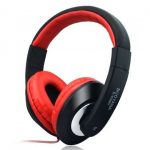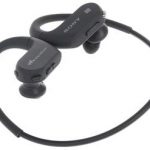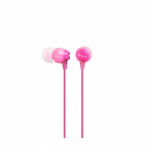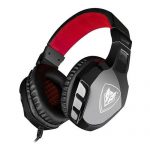 Wireless headphones with built-in FM radio - a well-thought-out development of manufacturers of accessories for electronics, striving to be "one step ahead", anticipating the wishes of its consumer. At first glance, the device that seems to be the simplest in choosing a model implies a thorough analysis of the basic technical characteristics for the selection of a device that fully meets the requirements of the buyer. What are FM radio headphones? What are their main advantages and disadvantages? What indicators should be relied upon in deciding to purchase a particular model? The reader will find the answer to these and other questions after reading the article below.
Wireless headphones with built-in FM radio - a well-thought-out development of manufacturers of accessories for electronics, striving to be "one step ahead", anticipating the wishes of its consumer. At first glance, the device that seems to be the simplest in choosing a model implies a thorough analysis of the basic technical characteristics for the selection of a device that fully meets the requirements of the buyer. What are FM radio headphones? What are their main advantages and disadvantages? What indicators should be relied upon in deciding to purchase a particular model? The reader will find the answer to these and other questions after reading the article below.
Content
Key Features and Operation
Without delving into the design and engineering details of creating headphones with the radio inside, the principle of reproducing the audio stream by the device in question can be described as a “reaction” of the built-in radio accessory to AM or FM frequencies. In most cases, radio stations are located on an antenna directly designed for such purposes. As a result of “pairing” the radio channels in the “ears” of the user, the broadcast frequencies begin to play.
In choosing wireless "ears" with a built-in radio, it is important to pay special attention to the basic characteristics for all types of headphones:
- Type (loose leaves, vacuum, laid on, full-size, monitor). The type of accessory considered in the article, as a rule, is an overhead type. This characteristic means the need for its "overlap" on the ears to ensure surround sound. Such a device in most cases has a lightweight design that allows the owner to use it for a long time, eliminating the occurrence of uncomfortable sensations.
- Headphone sensitivity can be represented by a value from 20 to 130 dB. The volume of the audio stream reproduced in the accessory depends on it and resistance (impedance). The optimal sensitivity level of this type of device with built-in radio is considered to be an indicator from 80 to 100 dB. Otherwise, the sound of the transmitted sound may be too quiet, especially if the operation of the device will mainly be localized on the street.
- The resistance (or impedance) of the “ears” also directly affects the volume and quality of the audio information being heard. There are goods on the electronics market with varying impedance levels from 16 to 300 ohms. High-resistance devices (more than 100 Ohms) are designed for their use together with powerful stationary equipment and require cooperation with special amplifiers. Accordingly, resistance above 100 Ohms in headphones with a built-in radio is not found in nature. Analyzing the accessory within the framework of the considered characteristic, it is worth giving preference to gadgets with indicators from 16 to 60 Ohms. In this case, the reproduced sound will be loud enough for comfortable operation of the “ears”, but not “deafening” even at the maximum level.
- Frequency. The human body on average is able to perceive frequencies from 16 Hz to 20 kHz, and as correctly as possible - from 20 Hz. Based on the above statement, in order to get the most “pure” sound, the choice when analyzing the assortment of “ears” with a radio should be made in favor of a device with a range from 20 Hz to 20 kHz. You should not buy headphones with significantly larger or smaller numbers, since in such a case these characteristics are nothing more than a “marketing ploy” for a gullible buyer, “greedy” for the product’s numerical indicators declared by the manufacturer in the passport.
How to choose
Choosing a headphone model that best meets the basic requirements of an advanced user, the buyer should focus not only on the basic characteristics given above, but also on the indicators of the distinctive functions of the wireless FM accessory. In this context, the indicator deserves attention:
- battery life;
- product weight;
- its designs.
The time of continuous operation of the headphones from the moment of the last “recharge” to the next should be a determining factor in deciding on the purchase of a specific model of device. This characteristic is the most important in the matter of the comfort of using the accessory, since, having a large battery capacity, the “ears” practically eliminate the risk of unforeseen situations associated with an unexpectedly failed device. Based on the above data, it is worth choosing headphones with a radio with the highest temporary indicator of autonomous use, ideally - 12-20 hours.
Top products of the segment considered in the article should have a minimum weight of not more than 100-150 g. Light weight will ensure the absence of “squeezing” and “weighting”, and in some cases pain, which may result in prolonged wearing of headphones with the radio during a trip or active sports. More weighty models, in addition to causing discomfort, can also loosely “sit” on the head, forcing the user to constantly check their location.
The design of the FM headphone is interdependent with the convenience of storing and moving the owner. Compact "ears" that can fold into the case designed for them are ideal for mobile people who spend most of their time on the move. In addition to the convenience of storage, with the flexible design provided by the manufacturer, the device ensures safety from various kinds of breakdowns during its transportation. Accordingly, choosing between folding and “stationary” headphones with a built-in radio, the choice should be given first.
The final decision to purchase a specific model of wireless accessory is advisable to make based on the presence or absence of the advantages and disadvantages of operating the “ears” for their intended purpose.
Positive points of use:
- built-in radio;
- the absence of a large number of wires that fetter the movement of the user;
- ability to quickly charge due to the "low-power" battery;
- the ability to customize the sound;
- protection against moisture and dust provided by the manufacturer on most models, due to their frequent use during sports;
- the ability to “memorize” radio stations with the possibility of their subsequent playback without re-searching for AM or FM signal.
Negative points of use:
- lower quality of audio stream playback in comparison with wired and wireless “competitors”;
- possible interference;
- problems finding individual radio stations;
- the influence of environmental conditions, in particular weather, on the reception and stability of the radio signal;
- The weighty designs of some models of headphones deliver pain during their long-term operation.
Top "ears" with the radio
To navigate that by and large should be headphones with a built-in radio, what technical and “external” characteristics they should have, a list of top models of the segment in question will help the buyer.
DENN DHB405

- Type: overhead
- Frequency range: 20 Hz - 20 kHz
- Impedance: 32 ohms
- Sensitivity: 54 dB
- The presence of a microphone: yes
- Battery Life: 10 hours
- The amount of internal memory: 32 GB
- Weight: 158g
- possibility of operation with a special wire in the absence of a battery charge
- claimed multifunctionality
- acceptable sound for its price range
- lower battery capacity than specified by the manufacturer
- discomfort that occurs when used in heat, due to the material used to make the accessory
- unstable signal
HARPER HB-411

- Type: overhead
- Frequency range: 20 Hz - 20 kHz
- Impedance: 16 ohms
- Sensitivity: 90 dB
- The presence of a microphone: yes
- Battery Life: 10 hours
- The amount of internal memory: 16 GB
- Weight: 180g
- quality assembly
- the presence of a screen displaying the charge level and the current mode of operation
- good sound insulation
- poor microphone quality
- heavy weight and size, inconvenience during transportation of the accessory
- inconvenient control of the "wheel" that replaced the usual buttons
Bluedio T2 +
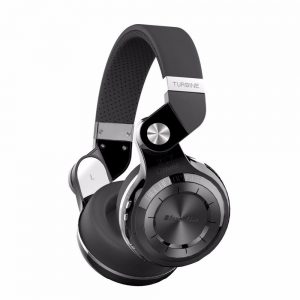
- Type: overhead
- Frequency range: 20 Hz - 20 kHz
- Impedance: 16 ohms
- Sensitivity: 110 dB
- The presence of a microphone: yes
- Battery Life: 40 hours
- The amount of internal memory: 32 GB
- Weight: 224g
- long battery life
- multifunctionality
- design
- possibility of use with a wire in the absence of a battery charge
- poor microphone quality
- the presence of interference in the radio signal
- "Miss" the sounds heard by others
Sony SBH24
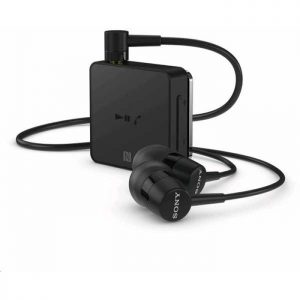
- Type: plug-in
- Frequency range: 20 Hz - 20 kHz
- Impedance: 16 ohms
- Sensitivity: 100dB
- The presence of a microphone: yes
- Battery Life: 6 hours
- Weight: 15g
- stable connection without interference
- multifunctionality
- possibility of use with a wire in the absence of a battery charge
- compactness
- small battery capacity
- poor microphone quality
Ritmix RH-480BTH
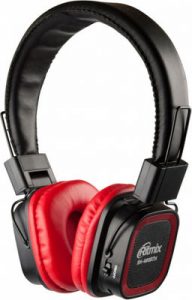
- Type: overhead
- Frequency range: 20 Hz - 20 kHz
- Impedance: 32 ohms
- Sensitivity: 105 dB
- The presence of a microphone: yes
- Battery Life: 5 hours
- Weight: 108g
- good sound quality
- acceptable noise isolation
- bright design
- unstable reception, in particular during battery charging
- small ear pads
- poor build quality
Headphones with radio can be an excellent accompaniment for sports or long walks. When choosing the accessory in question, it is important to remember significant indicators illustrating the quality of the device. Based on the information provided in the article, the buyer will not only be able to choose the most suitable option for himself, but also save money by opting for high-quality analogues of well-known brands.
